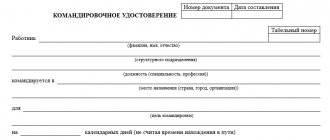One of the most important circumstances with which the legislation connects the emergence of many legal relations in the field of social security is the total length of service. Its size has a significant impact on the scope of rights granted to disabled citizens. What is total work experience? What's included in it? Let's look at these questions further.
Definition
The concept of “total length of service” implies the total duration of professional and other socially useful activities, paid and unpaid. It has both qualitative and quantitative characteristics. Periods of total work experience include the time during which the employee performed his duties and also improved his qualifications.
In this case, work can be home-based, seasonal, temporary, permanent, and so on. Study in the direction of the enterprise is included in the total work experience. Its purpose may be employee certification, promotion, retraining, and so on. “Other activities” should be understood as the provision of services or the implementation of some work under the terms of civil contracts, the creation of works in accordance with the copyright agreement, and individual commercial activities.
What types of length of service affect the size of your pension?
As is known, the final amount of pension provision established for a specific person will depend on various factors. This list also includes various types of work experience. In accordance with current legislative norms, the total period of work experience may consist of:
- from any professional activity that was carried out on the territory of our state. It should be noted that work outside the Russian Federation may also be included in the length of service; however, in this case, there will be certain restrictions in the procedure for counting such activities;
- military service, which is carried out both in accordance with conscription and on the basis of a concluded contract;
- time of illness that arose during the period of official employment of an individual or disability, the receipt of which was also carried out during the work of the citizen;
- time spent in places of imprisonment, provided that in the future the previously passed sentence was officially canceled;
- time spent officially registered at the employment center.
In addition, some additional periods during which the citizen was not actually engaged in professional activities for certain reasons may be included in the total length of service. The list of such periods is established officially. The main ones include the following:
- completion of vocational training by an individual at a relevant institution;
- time spent caring for a close relative who was officially declared incompetent;
- while the woman is on maternity leave. This also includes the period of caring for a child who has already been born until he reaches the age of three;
- a time during which the soldier’s wife did not have a full-fledged opportunity for official employment. Here, special attention should be paid to one additional rule, namely, the maximum duration of such a period should not exceed 10 years;
- the time citizens spent in the occupied territories, as well as in concentration camps during the Great Patriotic War.
It should be noted that in order to include the above periods in the total length of service, each of them must be confirmed by relevant documents. To do this, the interested person will need to submit various papers to the authorized organization. For example, if we are talking about ensuring proper care for an incapacitated relative, the main documents will be the relevant medical reports, as well as the decision of the judicial authority.
What is included in the length of service and how to calculate the periods?
To calculate the total length of service, an authorized person must follow the following simple scheme:
- First, he must determine all the periods that, in accordance with current legislation, are necessarily included in the length of service. Here it is necessary to remember that these periods can be expressed not only in professional activities, but also in other activities, including creativity, as well as socially useful work.
- Next, all selected periods must be summed together. The final indicator will be the total length of work experience of a particular person.
In addition, the person responsible for the calculation must remember one additional rule, namely, some periods of a citizen’s labor activity are subject to credit in a special manner, for example, in double or one-and-a-half times. Such periods include:
- work in the Far North region. As you know, this region is distinguished by the presence of particularly harsh living conditions. That is why the operating time here will be increased by exactly one and a half times. This also includes periods of work in other areas that were officially equated to the Far North;
- the time a citizen served in the army, as well as the period of work in leper colonies, etc. In this case, the rule of doubling the above periods will apply;
- time of participation in various military operations, as well as periods of work in the accident zone at the Chernobyl nuclear power plant. These periods during the calculation of the total length of service will be increased exactly three times. This rule will also apply to the time an individual is in prison, provided that the sentence of the judicial institution was ultimately officially annulled.
It should be noted that to determine the length of service and subsequent calculation of the amount of pension benefits, the current legislative norms have developed several available formulas. Each of them can be chosen by the insured person independently. That is, the citizen himself has the right to decide exactly how his future pension will be calculated from the available methods. According to general rules, the length of work experience is determined in years, months and days. In this case, the average values apply during determination. For example, one month here will always be equal to 30 days.
Specifics
From the definitions used by the legislation, some transformation of a number of characteristics becomes clearly visible. Thus, labor, which acts as a qualifying criterion or attribute establishing a citizen’s right to pension insurance, begins to be replaced by another concept. In particular, we are talking directly about the payment of contributions, that is, about the real financial result of this activity.
More information about work experience
Work experience is the time that a person devoted to working in an organization, as an individual entrepreneur, or for socially useful work. Citizens of all ages need to know their length of service.
Elena Smirnova
Pension lawyer, ready to answer your questions.
Ask me a question
For young people it is necessary to receive payments for sick leave and to receive maternity funds. For middle-aged people, the benefit is the size of their pension contributions.
Work experience according to Federal Law
According to the Federal Law, the concept of seniority is regulated by Article 20 of July 21, 2014 under number 216 of the Federal Law. This concept is also included in the law on pension payments of December 17, 2001 under number N 173 Federal Law.
Normative base
The right to receive old-age benefits for a number of categories of citizens is established on the basis of length of service. This provision is provided for in the provisions of Art. 10, paragraph 2 of the Law regulating state pension provision. Work and other activities established in Art. 10 and 11 of the above Law. This regulatory act does not define the procedure for confirming the duration of professional and other activities. The rules for counting it have not been established. However, in accordance with the meaning of the provisions of Art. 10, confirmation and calculation of the total length of service is carried out similarly to the procedure and norms of Art. 13.
Concept and legal meaning
Work experience is the total duration of working and social activity, calculated in a certain order, starting from the moment of reaching working age .
Its calculation is necessary to obtain various guarantees and compensations established by law. From a legal point of view, this is a fact, upon the occurrence of which the right to receive pension payments, certain types of benefits, and benefits arises.
It has two characteristics:
- quantitative, that is, the time period of the activity;
- qualitative - represents the conditions in which a person worked, their harmfulness, danger, etc.
The main document confirming its duration is a work book .
You can get more detailed information about this concept from the following video:
https://youtu.be/YqEZI8GfbJM
Important point
Before calculating the total length of service, it is necessary to take into account other activities related to Pension Fund contributions. In this case, it is appropriate to clarify some points. Analyzing the content of Art. 10 and 11 of the above Law on Pensions, we can conclude that there are differences between the non-insurance and the parts of work and other activities related to the payment of insurance contributions. The normative act establishes certain conditions. In particular, to include an activity in the insurance period, it is necessary that it:
- It was carried out on the territory of Russia.
- Insurance premiums were paid during this time.
The legislation also provides for the possibility of including in the insurance period the activities of citizens abroad, if this is established by an international treaty. An additional condition is the payment of insurance premiums voluntarily in accordance with the Insurance Law.
Calculation according to work book
How to calculate length of service using a work book
This document is the basis for calculating the number of years worked (experience). Existing calculation modules are attached to accounting computer programs.
From the work book, records are taken into account for calculation purposes where the employee retained a job position and was paid for work:
- the time period from the date of hiring to the day of dismissal;
- time of military service (in accordance with Law No. 4468-1, adopted in 1993);
- time of service in the Ministry of Internal Affairs, Ministry of Emergency Situations, penal service, etc.;
- being on sick leave is taken into account;
- maternity and childcare leave for a total of 6 years;
- civil service, unemployment registration, social activities, etc.;
- time to care for a sick relative or child according to standards;
- period of isolation by court decision;
- period of military service abroad.
The minimum length of service (Article 8 of Federal Law No. 400) for calculating the insurance portion is 15 years.
Other activities
The insurance period also includes:
- Military (contract, conscription) service.
- The time one parent cares for each child is up to 1.5 years, but not more than three years in total.
- The period of receiving unemployment payments, participating in public (paid) events, moving to another area to get a job in the direction of the service.
- The time of detention, as well as serving a sentence in case of unreasonable application of criminal liability, the time of repression for persons subsequently rehabilitated.
- Caring for disabled people 1 year old, a disabled child or a citizen who has reached 80 years of age.
All specified activities are counted if a prerequisite is met. All of them must be followed or preceded by work. However, there are no requirements for its duration. Theoretically, one day may be enough. However, in practice, such activity is considered random and has its own characteristics and consequences. Since the total length of service can be calculated only taking into account the periods indicated above, their duration must be documented.
Work experience for early retirement
From Article 8 of Federal Law No. 400 it is clear that it is not necessary to wait until retirement age. If a person has worked enough, he receives the right to rest and government support two years earlier.
IMPORTANT!
For women this is 37 years old, for men - 42. But before 55 and 60 years old, respectively, you will not be able to take advantage of this benefit.
A woman born on May 1, 1965 is legally required to retire in November 2021 at age 56 and a half. But if she started working at age 18 and worked continuously for 37 years, then she will be able to start receiving pension payments in May 2020.
According to Article 30 of Federal Law No. 400, if they have a certain length of service, representatives of some professions may also not wait until retirement age. The number of years may be even less than what is needed to assign benefits under normal conditions:
- for those who worked in underground work: 10 years for men and 7.5 for women;
- for working locomotive crews - 12.5 and 10 years;
- for crew members - 12.5 and 10 years;
- for workers and logging foremen - 12.5 and 10 years.
In some cases, there are additional requirements for general insurance coverage.
Total work experience: list of activities
The assessment of a citizen's pension rights is carried out on the basis of the total duration of work and other socially useful activities carried out before January 1. 2002. It is taken into account in calendar order. Total work experience includes:
- Acting as an employee (hired outside the country, including), a worker, a member of a collective farm or other cooperative association. This category also includes other work in which a citizen, not being an employee or employee, was subject to compulsory pension insurance. The time of activity in paramilitary security, mountain rescue units, special communications agencies, regardless of its nature, individual activity, including in agriculture, is also taken into account.
- Creative work of members of the relevant unions - composers, artists, writers, theater workers, cinematographers, as well as artists and writers who are not members of them.
- Service in the Armed Forces of the Russian Federation and other military formations formed in accordance with the current legislation, the Allied Armed Forces of the CIS, the Armed Forces of the former USSR, the Internal Affairs Directorate of the Russian Federation, FSB agencies, foreign intelligence, federal executive structures that provide for military service, former units of the State Security of the Russian Federation and the USSR (including when these structures had a different name), being in partisan detachments during the Second World War and the Civil War.
- Temporary disability that began during work, a period of 1 or 2 degrees of disability, resulting from a work-related injury or injury, or an occupational disease.
- The time spent in places of detention is longer than the period assigned during the retrial of the case.
- The period of receiving unemployment benefits, moving from the employment center to another territory for employment, participation in public (paid) events.
Calculation for sick leave
The entire length of service for calculating the certificate of incapacity for work is calculated only on the basis of legislative documents developed specifically for these purposes.
To calculate it, you only need to provide your work book or a copy of it to the person involved in the calculations.
An important rule when calculating! It must be remembered that length of service should not be equal to insurance coverage. These concepts are far from each other and are calculated differently.
For the calculation, in addition to the main period of the employee’s entire activity, other years included in the list of those included in the length of service are taken. These include:
- Military service;
- The employee’s presence in any educational institutions, regardless of what type of education he receives (the entire course of educational institutions attended and supported by documents is considered);
- Maternity leave (caring for a child up to 1.5 years old).
For general calculations of length of service, it will be necessary to attach the employee’s insurance length to all other indicators. All calculated number of days must be converted into an annual equivalent.
If there is no date in the work book entries, in such cases only a 14-day period of time is taken, no more or less.
In order to correctly calculate a certificate of incapacity for work in the absence of an employee immediately after he is hired, it is necessary to indicate not the average salary in all calculations, but only its minimum value allowed by law.
All calculations must be made strictly in accordance with current legislation and excluding any errors; for this, everything can be checked and recalculated several times. Otherwise, the employee may go to court with a claim for incorrect calculation of the day or year of service. And he will have every right to do so.
Comparative characteristics
The total length of service is currently used by Pension Fund employees when determining the amount of pension capital. It represents the volume of a citizen’s savings at the time Federal Law No. 173 came into force. Of these, the insurance pension part will be established. At this point you need to pay special attention. You should know that the basic pension part is always unchanged, it is set in clearly defined amounts, while the insurance component is dynamic. The latter has a direct impact on the amount of expected payments. Simply put, the total length of service will affect the size of the pension for those citizens who began their professional activities before January 1. 2002, before Law No. 173 came into force.
What is included in the length of service for a pension?
It is also worth clarifying what is included in the length of service for calculating a pension and how it is formed. Today it is calculated according to two parameters: minimum working experience (number of years) and insurance coefficient (number of points).
Work experience does not play a role in calculating an old-age pension.
Individual points are determined according to the insurance premiums paid for the employee. A senior citizen no longer needs to confirm a working period later than 2002. After registration of SNILS, the Pension Fund makes calculations according to the payments made from the company.
Vacation and Service Points
If a citizen did not perform labor duties for one of the socially significant reasons, the number of individual points is awarded according to the following criteria:
- Being on leave to care for a child: 1.8 points;
- Second: 3.6 points;
- For the third: 5.4 points (similar for subsequent ones);
- For a disabled person, incl. child, elderly citizen: 1.8 points;
- Service (army): 1.8 points.
If the total time of employment of a person is less than that established by law, all his contributions no longer matter, he is not entitled to a calculation, and is awarded an old-age pension without length of service.
The number of points awarded increases annually. Today it is 7.39 and will increase with each period to a maximum of 10 by 2021. The cost of one point is set at the government level and adjusted annually. Today it is equal to just over 70 rubles .
Meaning of "other activities"
It is of interest exclusively to the Pension Fund. You must contact this organization with documents giving you the right to add periods to your existing experience. If the book in which professional and other activities are recorded is lost (damaged), the employer is obliged to issue the missing papers at the request of the future pensioner. This could be, for example, a copy of the contract, a certificate of experience. The main task of the employer is to correctly summarize all the employee’s activities as reflected in the documentation. The employer must assist in every possible way and help navigate the process of obtaining pensions for citizens employed at his enterprise.
Changes in the role of seniority for pensions
Compared to the previous system of calculating pensions, the emphasis has been shifted to income and accompanying payments of contributions to the Pension Fund, and the role of length of service has been significantly reduced.
But the length of service retained the significance of the condition necessary to receive a labor (insurance) pension.
It also becomes important at the moment when retirement age approaches: if you continue to work without applying for a pension, then its value can be significantly increased.
The importance of length of service for pensions was described in detail by Federal Law No. 400 of December 28, 2013, in particular, Chapter 3, which is entirely devoted to the length of service.
Then the insurance period appeared, including its minimum value, which ensures the right to receive an insurance pension.
Its absence will result in receiving only a social pension, but its payments will begin to arrive no earlier than in 5 years, with the onset of the age established by the pension reform (this takes into account all transitions in the period of validity of the new law - from this year to 2023.
Those. depending on the year of the reform – first, second, ... the citizen’s retirement age is determined, social benefits are calculated and it is announced when he will be able to receive it).
- This year, women will receive social benefits at 55.5, men at 60.5.
- Next year, social pensions will be issued to citizens aged 56.5 and 62 years.
- At the end of the reform period, in 2023, and its final provisions are fixed, women will receive old-age social benefits at 60, and men at 65.
Regional allowances will bring the amount of social benefits up to the minimum subsistence level established in the citizen’s place of residence.
The work experience accumulated after registration of SNILS does not need confirmation, and this is a big plus for citizens. The Pension Fund, having a database of pension contributions, fully has the necessary information.
Clarification of definition
The emergence of such a term as “insurance period” is determined by the reform of pension provision in the Russian Federation. The first mention of this definition can be seen in the text of Federal Law No. 27. Its provisions regulate personalized (individual) accounting in the pension (state) provision system. Within the meaning of existing regulations, it can be determined that the insurance period represents the total duration of those periods of professional activity of the insured citizen, during which the corresponding contributions for him to the Pension Fund were paid.
About insurance and work experience
The concepts of length of service that exist after changes have been made to pension legislation are somewhat worrying for people before retirement. It is not entirely clear the difference between the types of length of service, what the specifics of the calculation are and what impact the insurance period can have on the amount of the state pension.
There are a number of regulations that define the differences (Labor Code of the Russian Federation, documents on pensions, rules for calculating length of service).
The concept of insurance experience appeared with the introduction of pension rights. According to new legislative documents, starting from 2020, receiving a pension is related to the insurance period. Today this duration is 6 years. By 2024, the main insurance period will increase by 1 year, from 2024 it will be equal to 15 years.
Special circumstances
In some cases, it becomes necessary to confirm the absence or establish the existence of insurance coverage for an employee. This is necessary, first of all, when determining the employee’s rights to receive a pension - for old age, in connection with the loss of a breadwinner, for disability. The legislation establishes certain conditions for this. In particular, in order for an employee to receive an old-age pension, in addition to reaching 55 for women and 60 for men, it is necessary to have an insurance period of at least five years. This provision is enshrined in Art. 7, clause 2 of the Federal Law on pensions. In other cases, it is not so much the duration that is important, but the direct presence of insurance experience.
Difference from insurance experience
Many people have come across these concepts, but not everyone knows what the difference is between them. The insurance period is applied when determining the right to accrue a pension from 2020.
According to the current law, payments are assigned when a person reaches retirement age and has a total insurance record of at least five years. This period includes the time for which contributions to the Pension Fund were accrued and paid, as well as some periods during which the person did not work:
- caring for a disabled person of group I;
- caring for a disabled child;
- time of receipt of temporary disability benefits;
- caring for a child up to one and a half years old, but not more than six years in total;
- caring for an elderly person over 80 years of age.
Labor is used to determine the right to pension payments for citizens who worked before January 1, 2002. Currently, this concept is absent in legislation. The size of the pension accrued before the specified date depends on its duration. After this, payments are calculated differently.
If you are interested in how to make an extract from a work record book, read this material.
Read about whether it is possible to have two work books at the same time here.
What should be the minimum length of service for an old-age pension?
The minimum working period is different for men and women. In addition, some categories of citizens have special benefits. Therefore, in accordance with the new pension legislation, pensioners for the transition period until 2025 will retire based on data from a government-approved table. So, for those who must leave work already in 2020, they must have at least 10 years of experience, which is 16.2 pension points.
Those who have not worked at all or have not earned the minimum length of service will receive a social old-age pension, the amount of which cannot be lower than the subsistence level.
How much experience does a woman need in Russia?
To receive pension payments, a woman in Russia must reach 55 years of age as of 2018. The insurance period cannot be less than 9 years. In 2020, no one will be able to count on receiving a pension if they have worked with contributions to the Pension Fund for less than 10 years. At the same time, a woman’s total work experience, taking into account non-insurance periods, is from 20 years.
How much experience does a man need?
If we talk about the purely insurance period, then its value in terms of the number of years at the moment is no different from the indicators established for women - 9 years, but there are some differences:
- the minimum retirement age is 5 years higher than for women;
- The minimum total work experience is 25 years.









